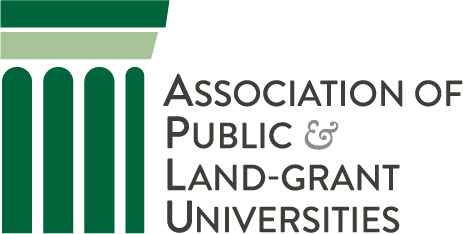College and university faculty and administrators looking for models for implementing adaptive learning courseware may appreciate exploring a series of case studies produced by the Association of Public & Land-grant Universities (APLU) in partnership with Every Learner Everywhere.
The six case studies on adaptive learning initiatives provide a picture of the transformative potential of redesigning courses with adaptive learning technology. The case studies outline the complex implementation work that follows courseware selection and how six different institutions worked through the adaptive courseware initiative and sustained continuous improvement to support equitable teaching and learning.
The case study series resulted from the Adaptive Courseware for Early Success (ACES) program at APLU, which was designed to improve student success outcomes to eliminate the equity gap for minoritized, poverty-affected, and first-generation students. The featured initiatives took place at Cleveland State University, Florida International University, The University of Central Florida, University of Texas El Paso, University of Texas Rio Grande Valley, and University of Toledo.
Megan Tesene, APLU’s Assistant Vice President for Digital Transformation for Student Success, project lead, and one of the co-authors of the series, says reading the case studies as a collection illustrates the variety of ways adaptive learning can be implemented toward different goals and with different organizational approaches.
For example, one institution prioritized incorporating more active learning with courseware, another was eager to improve and extend the use of data in an existing adaptive courseware initiative, and another focused on reducing attrition in particular majors.
The courses targeted were gateway courses that each institution had identified as ideal candidates due to their high enrollment and high DFW rates, with an emphasis on improving outcomes for minoritized student populations. The redesigned courses discussed in the case studies include anatomy and physiology, biology, chemistry, statistics and algebra, calculus, physics, and Spanish.
“Institutional transformation work in digital learning can be very broad,” Tesene explains. “Our work in the ACES initiative focused on how institutions can intentionally integrate educational technologies in the classroom to support students and faculty.”
Each case study discusses the institution’s adaptive courseware implementation plan, challenges, faculty development, data collection, student impact, key takeaways, and future plans. Each features insights from the institution’s leaders, faculty, instructional designers, technology specialists, and students. They also offer inspiring examples of adjusting to challenges during implementation, such as developing one-on-one remediation in response to student learning data.
Findings from the adaptive courseware case studies
Collectively, the case studies offer cause for optimism about the potential for adaptive learning if implemented with careful attention. All six institutions saw improvement in practices such as coordination and alignment efforts, collaboration across units or within academic programs, and changes in teaching practices and philosophies.
The ACES cohort included a diverse set of institutions serving different communities in a variety of geographic locations. Yet each institution found an effective approach and framework to push their work forward, Tesene says, adding that integrating adaptive courseware does not have a single starting point.
“One question we often get is, ‘What do we need to have in place to get started?’ Looking at the case studies across the board, you can see that institutions can start wherever they happen to be,” she says. “Some in the cohort were refining implementations of adaptive courseware in established programs. Others were just getting started with developing new initiatives.”
For example, the University of Central Florida case study describes how their existing Personalized Adaptive Learning program worked to extend their efforts further across the institution and to incorporate open education resources. Meanwhile, Florida International University was facing a very targeted challenge: There are limited commercial courseware products suitable for the unique calculus course they had developed for engineering majors. (They chose to build an original courseware around an open-source assessment platform.)
Another finding common across the case studies is that a courseware implementation that truly supports equitable student outcomes requires time and a willingness to adjust. “We wanted each institution to understand that quality teaching prioritizes continuous improvement,” Tesene explains. “Institutions should focus on what they can incrementally fix, try it, refine it, evaluate it, and then keep pushing forward a little bit every semester.”
For example, the findings in the Cleveland State University case study note that “change in practice takes time. It can take multiple semesters for faculty, faculty support staff, and students to get comfortable with using adaptive courseware or experiencing new instructional styles.”
The case studies also illustrate the necessity of strong departmental and institutional leadership and of faculty involvement throughout the process, including design, implementation, evaluation, and iteration.
For example, the University of Texas at El Paso case study details how a cross-functional group of biology faculty, instructional designers, and colleagues from the Office of the Provost collaborated to integrate adaptive technologies, open education resources, and active learning to improve student performance in high-enrollment gateway courses. The University of Toledo’s case study details how new faculty development efforts centered on using adaptive learning in alignment with a redesign of their first-year experience program.
The case studies describe how the institutions used adaptive learning to improve learning outcomes despite significant challenges, including personnel turnover, resource limitations, change fatigue, and limited technology access. The biggest challenge was that the ACES initiative spanned the worst of the COVID-19 pandemic, and the continued efforts of the participating universities during significant institutional transformations, says Tesene, speak to their commitment to their students’ success.
She adds that successfully implementing adaptive learning doesn’t necessarily depend on a particular organizational structure for the initiative. “Some of these institutions have robust teaching and learning centers or technology programs while others have just a few individuals leading multiple roles,” she explains. “Still, every college reported some level of change and improvement in institutional practices, pedagogies, or philosophies, which was encouraging to see.”
Background of the adaptive courseware case studies
The ACES initiative, supported through the Every Learner Everywhere network, started in 2019 with the Personalized Learning Consortium at APLU providing direct guidance to these colleges, including coaching, mentorship, networking, collaborative learning, resources, and other technical assistance services.
ACES also provided space for cross-institutional information sharing by using a cohort model, offering the chance for colleges to work and learn with each other.
That community building and information sharing was an integral part of the initiative, Tesene says: “You need to forge relationships, community, and understanding to build capacity and sustainability within an institution. Sharing lessons across institutions helped faculty and leadership develop strategy and problem solve. This initiative brought faculty, administrators, teaching and learning centers, and edtech units together as collaborative partners to better serve students.”
View all 6 case studies


